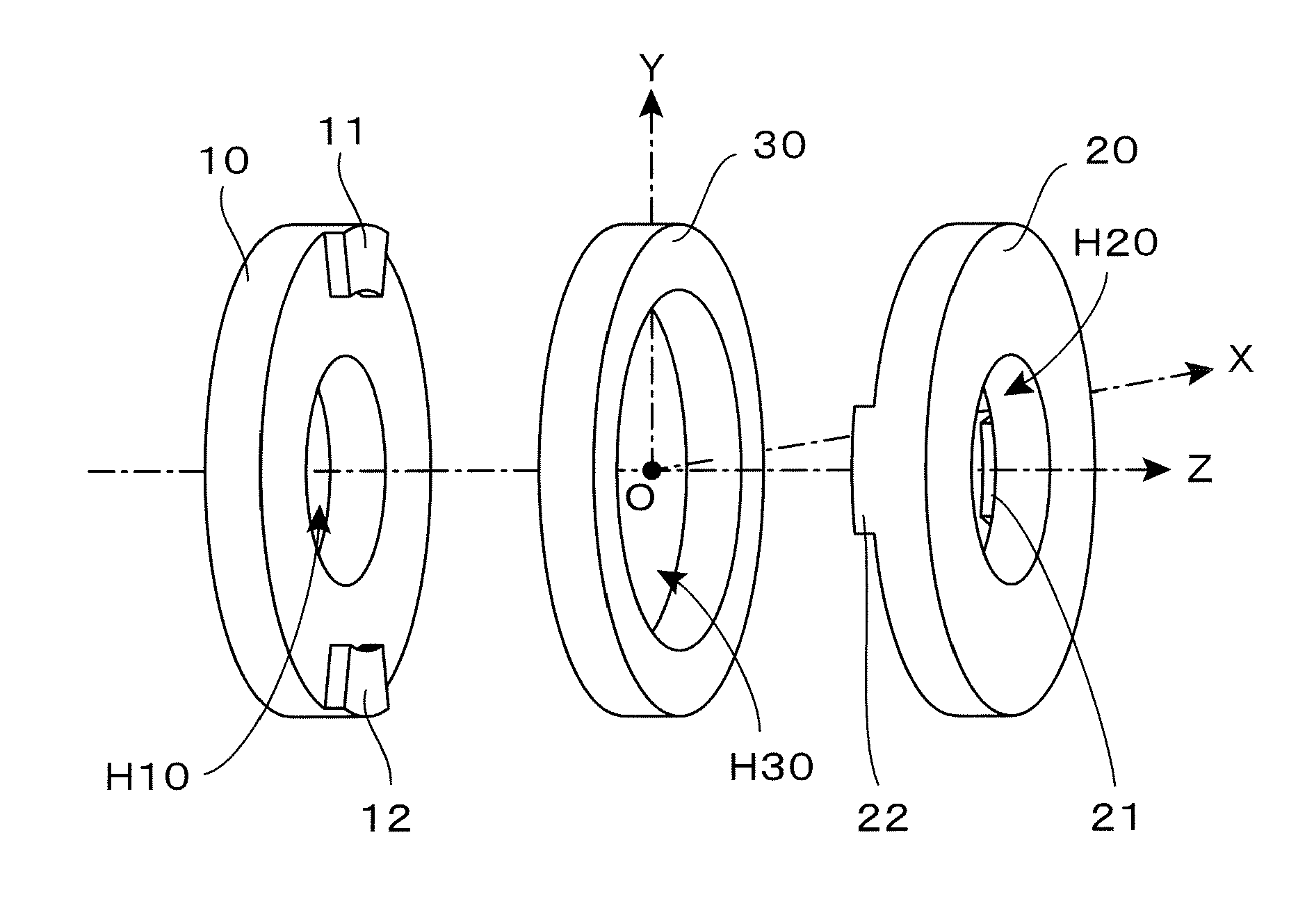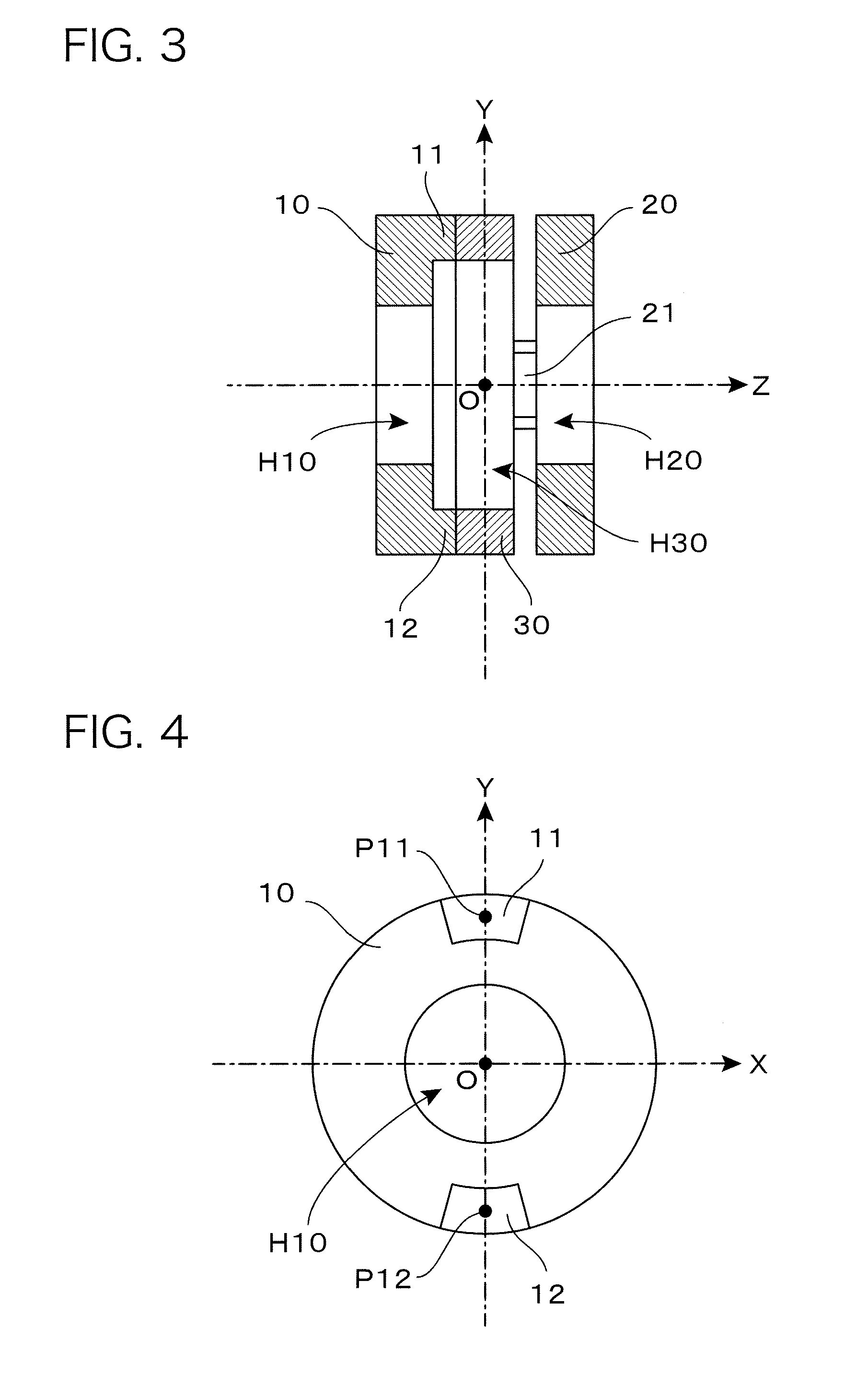Torque sensor
a technology of torque sensor and axial length, which is applied in the direction of force measurement, electric/magnetic measurement arrangement, instruments, etc., can solve the problems of difficult design of conventional torque sensor using a torsion mechanism, complicated structure accordingly, and difficulty in designing conventional torque sensor with a short axial length. , to achieve the effect of reducing the cost of space, improving the detection accuracy, and high accuracy
- Summary
- Abstract
- Description
- Claims
- Application Information
AI Technical Summary
Benefits of technology
Problems solved by technology
Method used
Image
Examples
Embodiment Construction
[0178]Hereinafter, the present invention will be described based on illustrated embodiments.
>>
[0179]FIG. 1 is an exploded perspective view of a basic structural section of a torque sensor according to a basic embodiment of the present invention. As illustrated, the basic structural section is constructed by disposing an annular deformation body 30 between a left side support body 10 and a right side support body 20 and joining the three structural elements to each other. Here, for the sake of convenience, an XYZ three-dimensional coordinate system is defined as illustrated to give the following description. Here, the Z-axis drawn in the horizontal direction of the figure corresponds to a rotation axis of torque to be detected, and the torque sensor fulfills a function of detecting torque about the rotation axis (about the Z-axis).
[0180]The annular deformation body 30 disposed at the middle of the figure is made of a material that produces elastic deformation clue to exertion of torq...
PUM
| Property | Measurement | Unit |
|---|---|---|
| torque | aaaaa | aaaaa |
| elastic deformation | aaaaa | aaaaa |
| capacitance | aaaaa | aaaaa |
Abstract
Description
Claims
Application Information
 Login to View More
Login to View More - R&D
- Intellectual Property
- Life Sciences
- Materials
- Tech Scout
- Unparalleled Data Quality
- Higher Quality Content
- 60% Fewer Hallucinations
Browse by: Latest US Patents, China's latest patents, Technical Efficacy Thesaurus, Application Domain, Technology Topic, Popular Technical Reports.
© 2025 PatSnap. All rights reserved.Legal|Privacy policy|Modern Slavery Act Transparency Statement|Sitemap|About US| Contact US: help@patsnap.com



